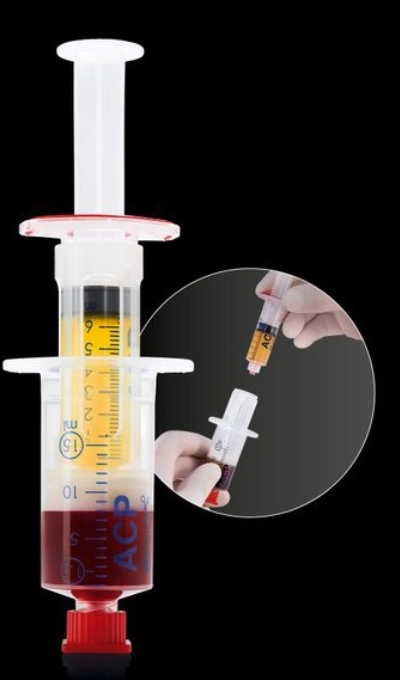Platelet Rich Plasma (or PRP)

Platelet Rich Plasma or Autologous conditioned plasma
Platelet Rich Plasma (or PRP) means any product from the patient’s blood where the plasma platelet concentration obtained is greater than in normal plasma. This is typically produced by using a centrifuge device to separate the constituents of a blood sample that has been taken from the patient’s arm. The concentration of platelets that needs to be achieved is not clear but studies suggest that a concentration above “baseline” of 2 to 5x is probably an appropriate target.
Mode of action: As mentioned above, platelets’ “main job” is to assist in the clotting response when an injury is sustained by a blood vessel (to prevent the individual bleeding to death!), but platelets are also known to contain substances that influence the body’s inflammatory and healing patterns.
Examples of these substances are platelet-derived growth factor, epidermal growth factor, transforming growth factor-β1 and interleukin-1β. These are typically released from packages within the platelets called alpha granules when signs of cell injury are identified.
To harness this benefit, platelets need to be concentrated and then activated to release the beneficial substances. The platelets can be obtained from blood by means of a simple syringe. The blood is then prepared in a centrifuge. This allows us to concentrate the desired products (platelets) and reduce the concentration or remove the less desired products. The prepared platelets are administered to the area to be treated normally by injection. The process of introducing a needle to the target area (for example a damaged tendon) initiates the healing response and activates the concentrated platelets.
Does it work?
The truthful answer is that we don’t know yet. Many studies are unfortunately not well designed. Many studies show significant clinical improvements in case series. It is not a cure for arthritis but it seems to be a very safe intervention.
What does the National Institute for Health and Care Excellence (NICE) say about this?
For the use of PRP to treat degenerative wear in the knee and to treat degenerative tendon conditions, at 2018 NICE says that current evidence on these treatments raises no major safety concerns; however, the evidence on efficacy is inadequate in quality. NICE says that further research is encouraged.
How is it given?
Most of the research supports the use of a series of injections (either 3 or 5) to be given with intervals ideally of less than 2 weeks. A sample of blood is drawn and prepared in a centrifuge. The concentrated platelets are injected into the damaged joint. A dressing is applied.


